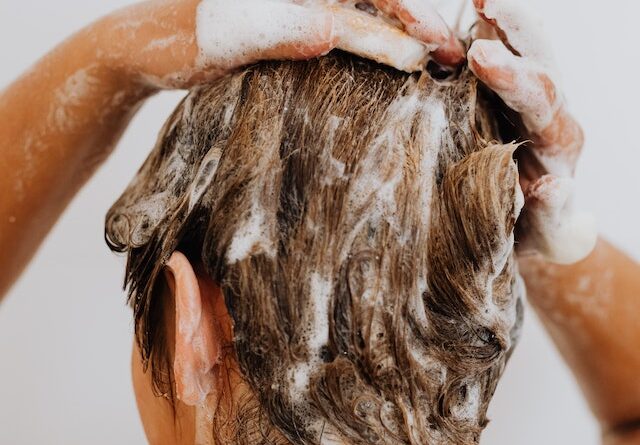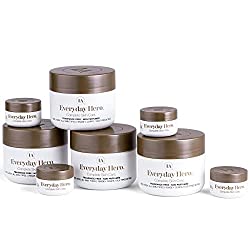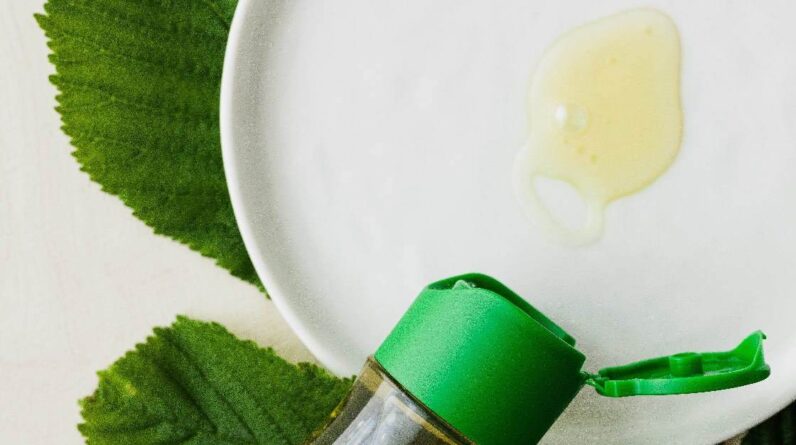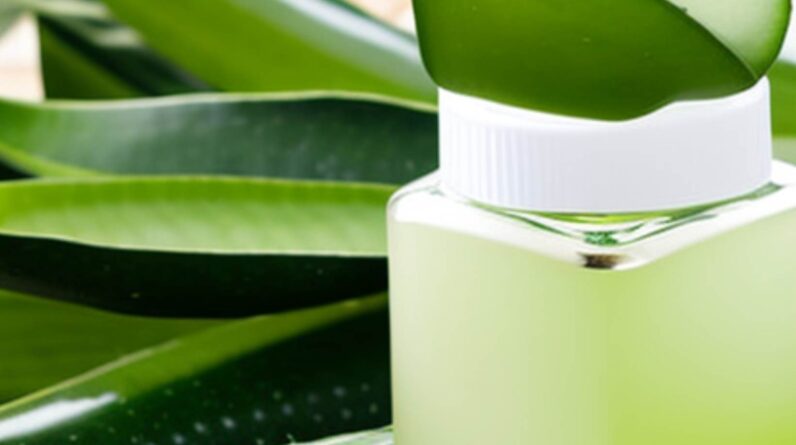

"Organic Aloe Vera Gel from freshly cut 100% Pure Aloe - Big 12oz - HighestQuality, Texas grown, Vegan, Unscented - For Face, Skin, Hair, Sunburn relief"
Global Healing Aloe Vera Bio-Active Organic Leaf Supplement - 200x Concentrate Formula with Highest Concentration of Acemannan - Aloin-Free - Gut Health & Immune Support - 60 Capsules
Face masks have become a crucial part of skincare routines, and when it comes to natural ingredients, aloe vera stands out for its incredible benefits. This easy DIY aloe vera face mask is a game-changer for those looking to achieve smooth, hydrated, and glowing skin without harsh chemicals or expensive products. In this step-by-step guide, we will show you how to harness the power of aloe vera in your skincare regimen right from the comfort of your home. Say goodbye to dull skin and hello to a revitalized complexion with this simple yet effective DIY face mask.
Key Takeaways:
- Hydrating properties: Aloe vera is renowned for its ability to hydrate and moisturize the skin, making it an excellent ingredient for a face mask.
- Anti-inflammatory benefits: The natural anti-inflammatory properties of aloe vera can help soothe irritated skin, reducing redness and inflammation.
- Easy DIY recipe: Making a homemade aloe vera face mask is quick and simple, requiring only a few natural ingredients that are readily available.
Preparing Your Ingredients
Selecting Quality Aloe Vera
Assuming you want to create the best DIY aloe vera face mask, it is crucial to start with high-quality aloe vera. Clearly, the key is to use fresh aloe vera gel directly extracted from the plant. Look for thick, clear gel without any yellowish tint, as this indicates impurity and age. Opt for organically grown aloe vera if possible to ensure maximum benefits for your skin.
Additional Natural Ingredients and Their Benefits
When considering enhancing the effectiveness of your aloe vera face mask, incorporating additional natural ingredients can take it to the next level. Benefits of using ingredients such as honey, yogurt, and turmeric include added hydration, antibacterial properties, and skin brightening effects. Aloe vera itself is known for its soothing and healing properties, making it a staple for treating various skin issues like acne, sunburns, and inflammation.
How-To: Creating Your Aloe Vera Face Mask
Some 3 DIY Aloe Vera Face Mask Recipes for Every Skin Type – maed
Step-by-Step Guide
| Ingredients | Instructions |
| Aloe Vera Gel | 1. Extract fresh aloe vera gel from a leaf. |
| Honey | 2. Mix aloe vera gel with honey in a bowl. |
| Essential Oils | 3. Add a few drops of imperative oil for added benefits. |
Tips for a Smooth Application
An imperative step in applying your aloe vera face mask is to start with a clean face to maximize absorption of the mask’s nutrients into your skin. Use a facial brush or clean fingers to evenly apply the mixture, avoiding the eye area. Allow the mask to sit for 15-20 minutes before rinsing off with lukewarm water for a refreshing finish.
- Consistency is key for a uniform application.
- Avoid applying the mask too close to the eyes.
- Thoroughly rinse off the mask with lukewarm water.
Guide your hands with gentle strokes while applying the mask to ensure an even coverage on your face. Remember that less is more when it comes to the amount of mask you use; a thin layer will suffice to work its magic. Thorough rinsing is imperative to completely remove the mask and reap its full benefits.
Another important factor to consider is ensuring that the aloe vera you are using is pure and free from harmful additives. Always perform a patch test on a small area of skin to rule out any potential allergic reactions. Once you’ve created your concoction, store any leftovers in the refrigerator to maintain freshness and prevent spoilage.
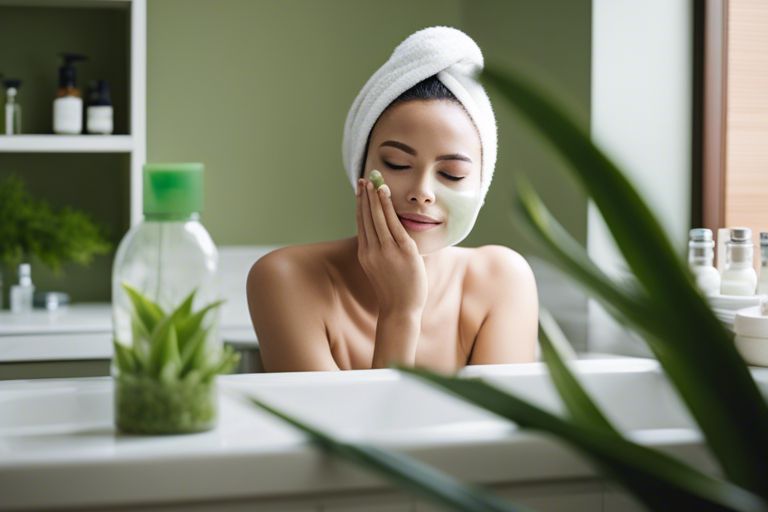
Factors to Consider for Optimal Results
To achieve the best results with your DIY Aloe Vera face mask, there are several factors that you should consider. These factors include your skin type, the frequency and duration of use, and knowing when to adjust or stop using the mask.
Skin Type Considerations
The key to getting optimal results from your Aloe Vera face mask is to consider your skin type before applying the mask. Aloe Vera is generally safe for all skin types, but individuals with sensitive skin may experience irritation or redness. It’s important to do a patch test before applying the mask to your face to ensure that your skin reacts positively.
Frequency and Duration of Use
Now, when it comes to the frequency and duration of using your Aloe Vera face mask, less is often more. While Aloe Vera is gentle and soothing, overuse can lead to skin irritation or dryness. It is recommended to use the mask 1-2 times a week for best results. If you notice any adverse effects, such as increased redness or itching, it’s important to discontinue use immediately.
Skin should feel refreshed and hydrated after using the mask. If you experience any discomfort or irritation, stop using the mask and consult a dermatologist.
Aftercare and Maintenance
Post-Mask Skin Care Tips
Now that you’ve enjoyed the benefits of your DIY aloe vera face mask, it’s crucial to hydrate and protect your skin post-treatment. Aftercare is imperative to maintain the youthful glow and nourishment achieved by the mask. Remember to apply a gentle moisturizer to lock in hydration and soothe any potential sensitivity. Using a sunscreen with at least SPF 30 is also recommended to shield your skin from harmful UV rays. Knowing how to care for your skin post-mask will ensure long-lasting results and promote skin health.
Storing Your DIY Aloe Vera Face Mask
If you want to preserve the effectiveness of your DIY aloe vera face mask, proper storage is key. Aftercare, it’s imperative to store the mask in an airtight container and keep it in the refrigerator to maintain its freshness and potency. Avoid exposing the mask to direct sunlight as it can degrade the ingredients and reduce its efficacy. Skin that is properly stored will provide maximum benefits for your skin each time you use it.
Conclusion
With these considerations in mind, creating your own DIY aloe vera face mask at home can be a cost-effective and natural way to promote healthier skin. By using simple ingredients like aloe vera gel and honey, you can easily tailor the mask to suit your unique skin needs. Whether you are looking to hydrate, soothe, or rejuvenate your skin, incorporating this DIY mask into your skincare routine can bring about significant benefits. So why not give it a try and enjoy the wonderful benefits of a homemade aloe vera face mask!
FAQ
Q: What are the benefits of using an Aloe Vera face mask?
A: Aloe Vera is known for its soothing and healing properties, making it ideal for treating various skin issues such as acne, inflammation, and sunburn. It also helps to moisturize and hydrate the skin, leaving it feeling soft and refreshed.
Q: How can I make a DIY Aloe Vera face mask at home?
A: To make a DIY Aloe Vera face mask at home, simply extract the gel from a fresh Aloe Vera leaf and mix it with other ingredients like honey, yogurt, or oatmeal to create a paste. Apply the mask to your face, leave it on for 15-20 minutes, then rinse off with warm water.
Q: Can Aloe Vera help with acne-prone skin?
A: Yes, Aloe Vera has anti-inflammatory and antibacterial properties that can help reduce inflammation and redness associated with acne. It also helps to unclog pores and prevent breakouts, making it a great natural remedy for acne-prone skin.
Q: How often should I use an Aloe Vera face mask?
A: It is recommended to use an Aloe Vera face mask 1-2 times a week to maintain healthy and glowing skin. Overuse of the mask may lead to skin irritation, so it’s important to use it in moderation.
Q: Are there any side effects of using an Aloe Vera face mask?
A: Aloe Vera is generally safe for most skin types, but some people may be allergic to it. Before applying the mask to your face, do a patch test on a small area of skin to check for any adverse reactions. If you experience any redness, itching, or irritation, discontinue use immediately.


